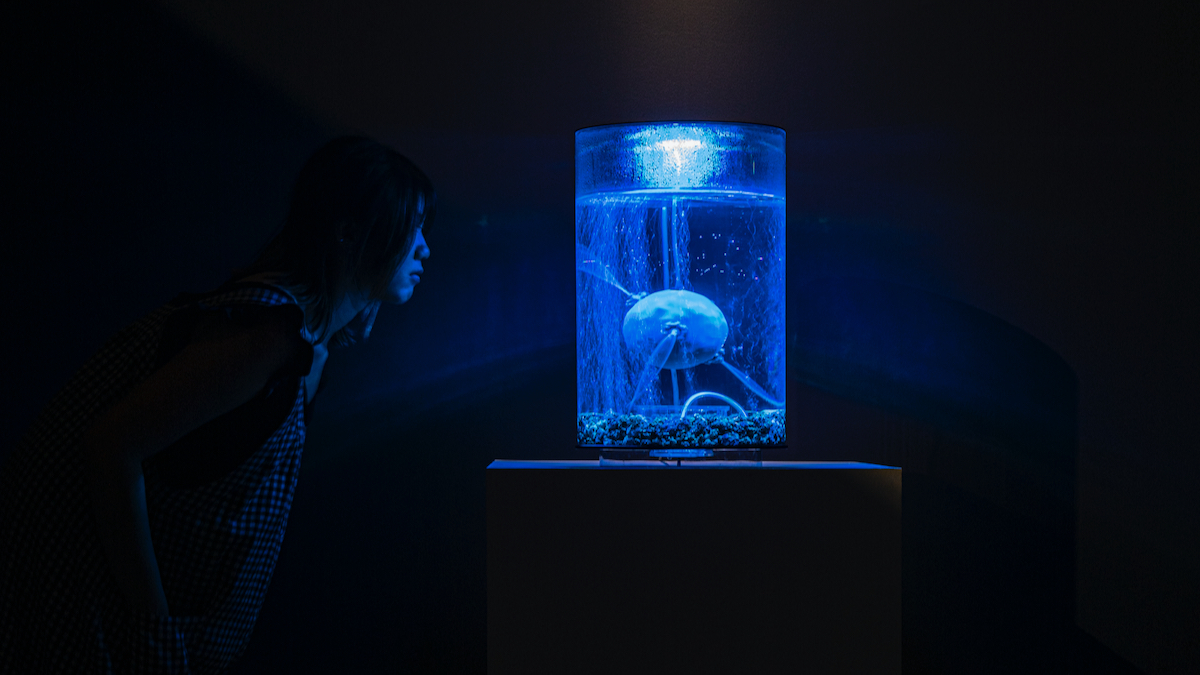British artist Anna Dumitriu’s name is synonymous with the world of BioArt. Not only is her work visually stunning, but it is also intellectually stimulating, as she tackles some of the most pressing issues of our time.
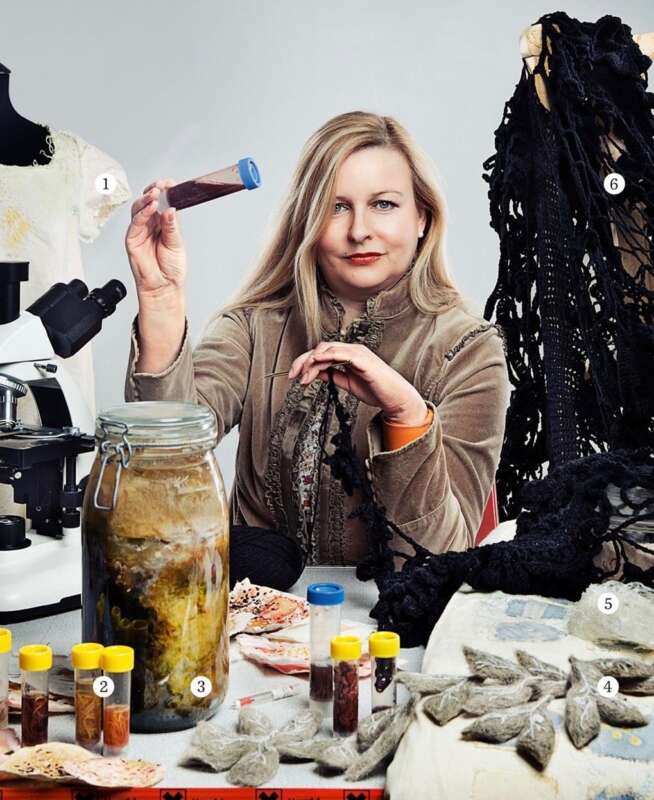
Courtesy of Wired Magazine
Dumitriu’s art explores our relationship to infectious diseases, artificial intelligence, and the impact of the pandemic from cultural and scientific perspectives. During her exploration of these topics, she has worked with the Liu Laboratory for Synthetic Evolution at the University of California in Irvine to investigate synthetic biology, and she has collaborated with BeyondSeq at the University of Birmingham to visually observe her CRISPR edit using super-resolution laser microscopy.
Her work is held in several major collections, including the Science Museum London and the Eden Project. Dumitriu’s focus on infectious diseases, synthetic biology, and robotics has won her numerous awards, including the Grand Prize for Best Art Overall in the Microbe Art 2020 Competition by the Federation of European Microbiology Societies.
Dumitriu is the director of The Institute of Unnecessary Research (IUR), a global hub for artists and researchers working experimentally with curiosity-driven research. She was also the lead artist on the Creative Europe supported project “Trust Me, I’m an Artist,” investigating the ethical problems that arise when artists create artwork in laboratory settings.
Currently, Dumitriu holds visiting research fellowships at the University of Hertfordshire and Waag, as well as artist-in-residence roles with the Modernising Medical Microbiology Project at the University of Oxford and with the National Collection of Type Cultures at the UK Health Security Agency. Her current collaborations include exploring the use of artificial intelligence in healthcare support systems with the EU CAPABLE Project, and the EU Better Factory in a project which explores how biomaterials and augmented reality can impact sustainability and the circular economy in wine production.
Even with her busy schedule, Anna Dumitriu found some time to talk to us about her inspirations, her artistic process, and her life as an artist exploring the intersection of art, science and technology.
The Interview
Q: What inspired you to start exploring the intersection of art, science, and technology?
Dumitriu: “I have always been fascinated by the way in which science and technology can inspire creative expression, and vice versa. My interest in this area was first sparked by my work as a microbiologist, which gave me an insight into the world of science and medicine that I was then able to explore through my art.”

Q: What is your artistic process like?
Dumitriu: “My artistic process is very research-intensive. I spend a lot of time reading scientific papers and speaking to experts in the field to gain a deep understanding of the scientific concepts I want to explore. I then work with a range of different materials, from traditional sculpting techniques to digital media, to create pieces that convey my ideas in an accessible and engaging way.”
Q: Can you explain the inspiration behind your artwork and why you chose to explore the relationship between microbiology and art?
Dumitriu: “I find microbiology really fascinating, and I’m interested in the relationship of infectious diseases to culture throughout history. They have had a huge impact on society, they change how we live. For example public health as we know it today originates from the time of the Black Death and when they had to deal with huge numbers of bodies and how to keep society functioning. Also, modernist architecture, for another example, is derived from methods to combat tuberculosis – which was originally known as consumption – these include allowing the sunlight to reach every corner of the room or having gaps at the edges of staircases so dust cannot collect.”
Q: In your opinion, what role does art play in promoting public awareness and understanding of scientific concepts?
Dumitriu: “I believe that art can play a role in promoting public awareness and understanding of scientific concepts, this isn’t the whole story because art in essence must be about art – and primarily exist as a work of art. So, aesthetics, materials utilized, our sensory perception, and our relationship to the object are all significant.
“My work is exploring issues in medicine. I aim to reveal personal experiences and stories of people affected by those issues.
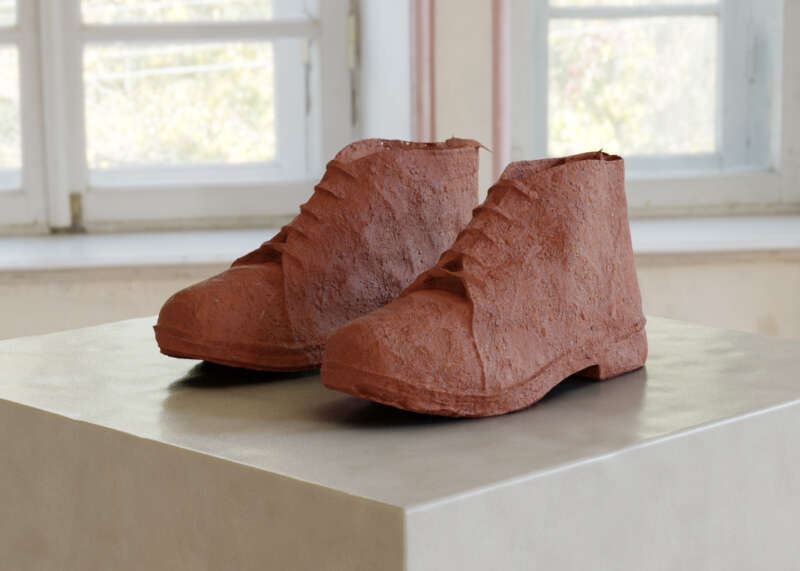
“One example is my work with Brighton and Sussex Medical School and the centre for global health where I looked at a neglected disease known as Podoconiosis (also known as ‘podo’), which is a highly stigmatized foot condition. It is caused by people with a certain genetic make-up walking for many years barefoot on a kind of red mineral soil that is often present at high altitudes. The disease can be treated by wearing shoes and foot washing, but this can be a huge issue in places where wearing shoes is not common and the act of wearing shoes can be seen as denoting someone is suffering from Podo, or where water is scarce.
“I’ve been making pairs of shoes cast from the shoes of a podo patient. The material I am using to cast the shoes contains the actual red mineral soil that causes podo (however it has been sterilized due to restrictions on the import of soil). The work is called “Walk in my Shoes” because if were to walk on this red mineral soil with our bare feet for many years then we too might find we also have the genetic makeup that might cause us to contract podo.”
Q: What messages do you hope your artwork conveys?
Dumitriu: “I want my artworks to convey my exploration of whatever aspect of science that I am researching, but also the aesthetic, ethical, and historical aspects of the subject as well as pose questions of what will come in the future. This kind of artwork has the possibility of providing ‘weak signals’ from the future that can enable us to think now about the ethical implications of certain forms of research, for example, and reflect again on the history of these ideas.”
Q: Your work involves a variety of media. Do you have a favourite medium, and how do you decide which medium to use for a particular project?
Dumitriu: “I have some mediums that I enjoy working with more than others; but really, it’s about whatever the particular project is and what it needs to tell a story. I love working with bacteria, I love working hands on in the lab and incorporating all those things into my artworks. But I’m from a fine art background and I also love craft techniques – including heritage crafts – so all these things are incorporated into my work to tell the stories that I need to tell.”
Q: You have led many workshops around the world. What have been some of the most interesting and unexpected creations that have come out of these workshops?
Dumitriu: “My most recent workshop was at the Helmholtz Zentrum in Munich in the Institute of Epigenetics and Stem Cells. Through this workshop, I worked with scientists and Ph.D. students to create a necklace based on the precise chromatin structure of the Oct 4 gene, one of the famous Yamanaka factors present in stem cells. The necklace was then drenched in a saturated solution of copper sulphate, which the scientists actually used in some of their cell biology research, and that was allowed to crystallize around the necklace.
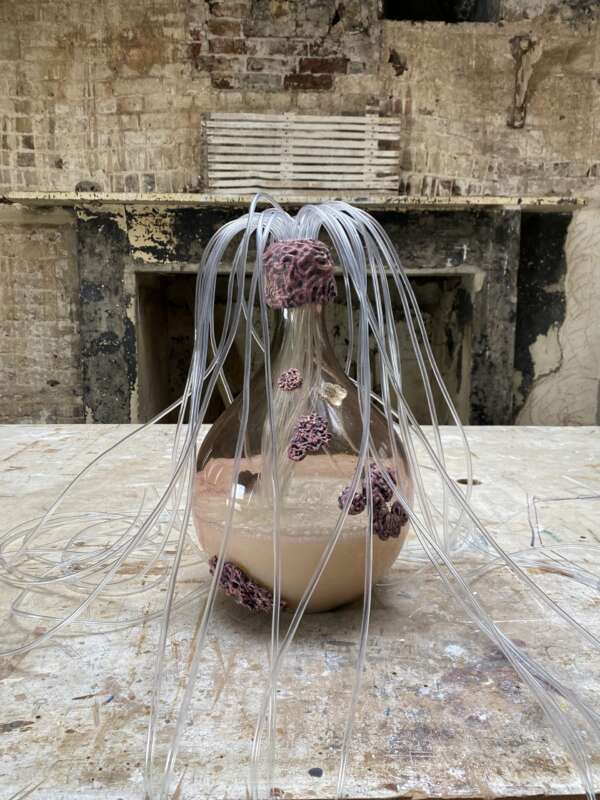
“It was really fascinating to work with the scientists and have their input and for them to understand the complexity of actually making a physical rendering of the gene; because certain factors that allow the DNA to bind around histones [a group of proteins found in chromatin] and form the chromatin structure are not present in the artwork. For example, the negative charging of the real DNA allows it to bind around histones very easily, which is not the case in the necklace version.
“Physically making things to understand how they really work is very important as it helps me to understand what I’m dealing with. I think this is true for other people as well.”
Q: If you had the power to change one thing about the world, what would it be and why?
Dumitriu: “I think if I had one thing about the world now that I could change, and here I’m thinking about globally significant problems, then it would have to be the prevention of climate change.
“I’ve created a number of works around this theme including “Fermenting Futures”, an artwork which comprises a bubbling vessel with 3D printed yeast forms swarming across it, fed by a mass of tubes which contain a genetically modified yeast. The genetic modification, using synthetic biology techniques, captures carbon from the atmosphere and converts it into lactic acid, which then can be polymerized to make polylactic acid, aka PLA 3D printing filament. So, in essence, it captures carbon and makes plastic.
“This project was a collaboration with artist Alex May and BOKU University in Vienna and is currently on show at ZKM in Karlsruhe, Germany.
“Another work exploring issues around climate change is “ArchaeaBot: A Post Climate Change, Post Singularity Life-form.” ArchaeaBot is an underwater robot based on ancient microbes that are highly acid and heat tolerant. The work offers us a glimpse of a potential dystopian potential future.”
You can learn more about Anna, her artwork and her installations by visiting her website: annadumitriu.co.uk
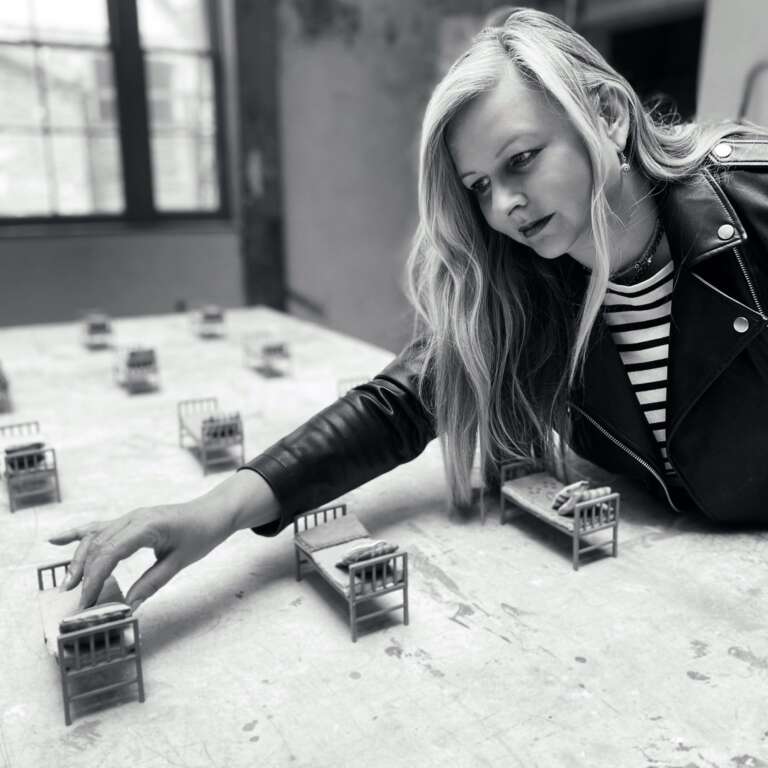
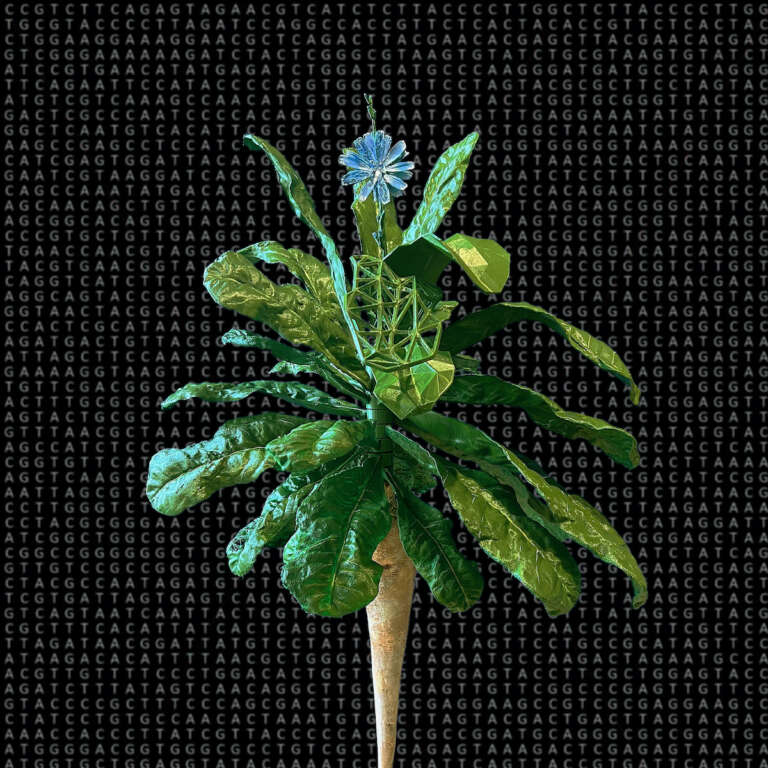


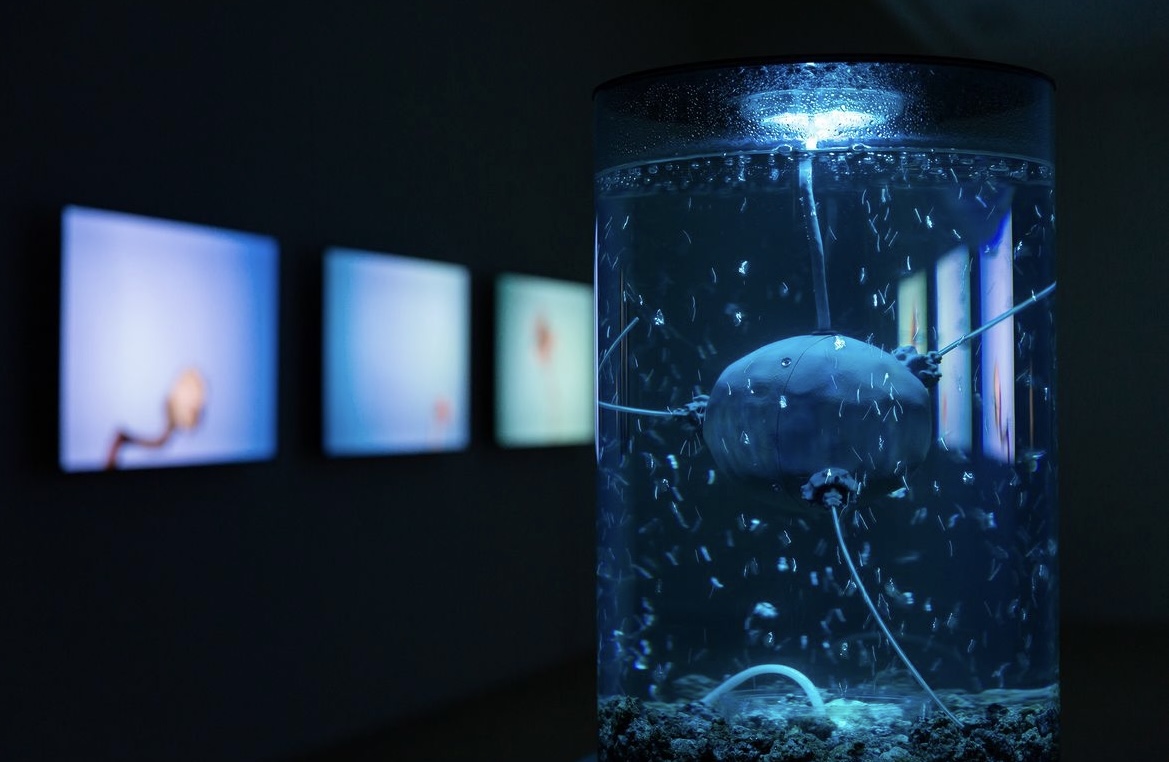

*All images are © 2023 Anna Dumitriu, unless otherwise stated.
Disclaimer: The views and opinions expressed in this interview are those of the interviewees and do not necessarily reflect the views or positions of Public Health Landscape or Valent BioSciences, LLC.
